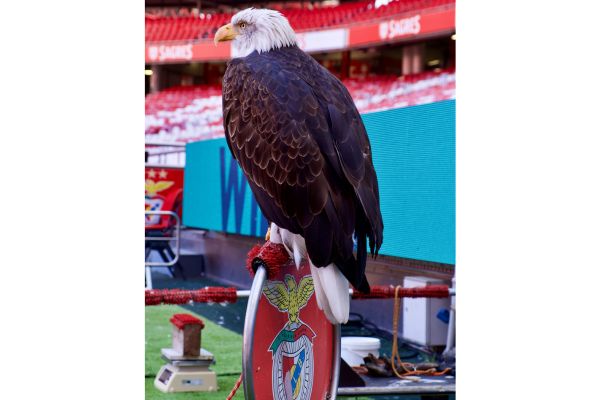“WHAT?!!” the chairman exploded.
“What did you just say?”
Malcolm Allison, calm as ever, leaned back in his chair.
“I think it’s time we changed our nickname.”
The chairman stared. “To what? We’re Crystal Palace! Our name is iconic — it personifies us!”
“Exactly,” Malcolm replied, eyes gleaming. “But we need something that commands respect. Something majestic. I propose… we become The Eagles.”
Silence. The chairman blinked, processing.
“Let me think about it,” he muttered. “We’ll talk tomorrow.”
Malcolm stood, tipped his hat, and walked to the door. Before leaving, he paused, turned, and grinned.
“By the way… want to hear my idea for the new kit?”
“NO!”
Malcolm just chuckled. “Sleep on it.”
That bold suggestion wasn’t just a passing whim — it was the spark that ignited a transformation. Malcolm Allison, never one to play it safe, had planted the seed for a new identity. The next day, when the board reconvened, history was made.
This is the story of how Crystal Palace became The Eagles.
The Pre-"Eagle" Era: A Club in Search of Identity
Before the eagle took flight, Crystal Palace FC were still crafting their image. For much of their early history, they were simply referred to as “Palace”, or more formally, “The Glaziers” — a reference to the club’s proximity to the Crystal Palace exhibition building, made of glass and iron.
It was a name with heritage, sure, but it didn’t strike fear into the hearts of rivals. As football branding began to evolve, it became clear that Palace needed something bolder, more inspiring. The club needed a symbol — not just a name — that stood for power, pride, and purpose.
Enter Malcolm Allison: The Birth of The Eagles
In the early 1970s, Malcolm Allison arrived — charismatic, eccentric, and not afraid to ruffle feathers. Known for his big ideas and even bigger personality, Allison had a vision: reimagine Crystal Palace from top to bottom.
He believed the team needed a fresh identity — something that would excite fans, motivate players, and send a clear message to opponents. He found his answer in the skies: the eagle.
Inspired by SL Benfica, who famously used an eagle to represent strength and freedom, Allison proposed that Palace adopt this fierce and noble bird as their own. The idea? Soar above the competition. Dominate with dignity. Attack with precision.
The Eagle Crest, the Kit Change & Their Symbolism
In 1973, Allison’s vision took visual form. A new club crest was unveiled — this time with an eagle perched over a football and the iconic Crystal Palace exhibition building in the background.
But Malcolm wasn’t done shaking things up.
As teased in that now-legendary office conversation, he also proposed a bold kit change. Palace ditched their traditional claret and blue — a look shared with clubs like Aston Villa — in favor of striking red and blue vertical stripes, inspired by Barcelona. It was a total identity refresh, from head to toe.
The eagle, wings outstretched, came to symbolize ambition, resilience, and the club’s potential to rise through the ranks of English football. And the new colors? They turned heads and made a statement: Crystal Palace was no longer blending in — they were ready to stand out.
Allison’s Legacy: Beyond the Bird
Malcolm Allison didn’t just give Crystal Palace a new nickname — he gave them attitude.
Under his guidance, the club changed more than its badge. Even the kit got a dramatic facelift, shifting from claret and blue to a more striking red and blue vertical stripe — colors that remain to this day.
Though his time at the club wasn’t filled with silverware, his impact was massive. He lit a spark that’s never gone out. Today, The Eagles are one of the most instantly recognizable nicknames in football, and their identity — forged in that office conversation — continues to inspire.
A Home Fit for Eagles

Much like Benfica’s Estádio da Luz, where an eagle flies around the stadium before kickoff, Selhurst Park has become the nesting ground for Palace pride.
With its vibrant, passionate fanbase and iconic Holmesdale End stand, Selhurst is more than just a venue — it’s the heart of the Eagle spirit. The energy, the defiance, the belief — it all lives there.
Still Soaring
Crystal Palace may have once been The Glaziers, but thanks to one manager’s fearless imagination, they took to the skies.
The eagle became more than a logo. It became a mission statement. A symbol of who they are, and who they aim to be — ambitious, proud, and never afraid to rise above.
So next time you hear the Selhurst crowd roaring behind The Eagles, just remember: it all started with one wild idea, and a very stressed-out chairman.
FINALLY, In may 2025, Crystal Palace wone their first major trophy. Beating Manchester City in the final to lift the FA Cup. By doing that they had made the FA Cup come full circle. To find out why check out our page on How the Home of the FA Cup Became Winners of the FA Cup.
